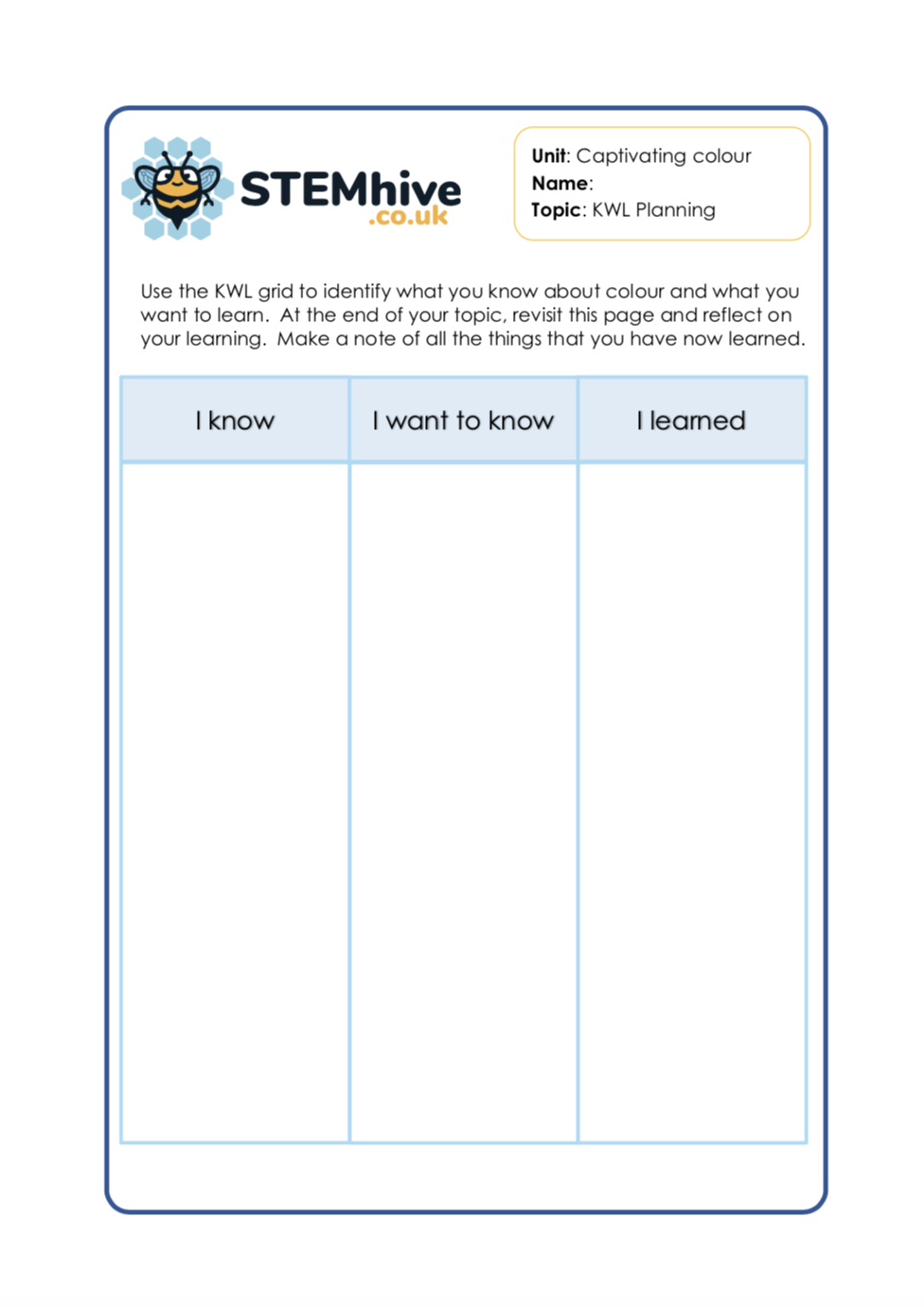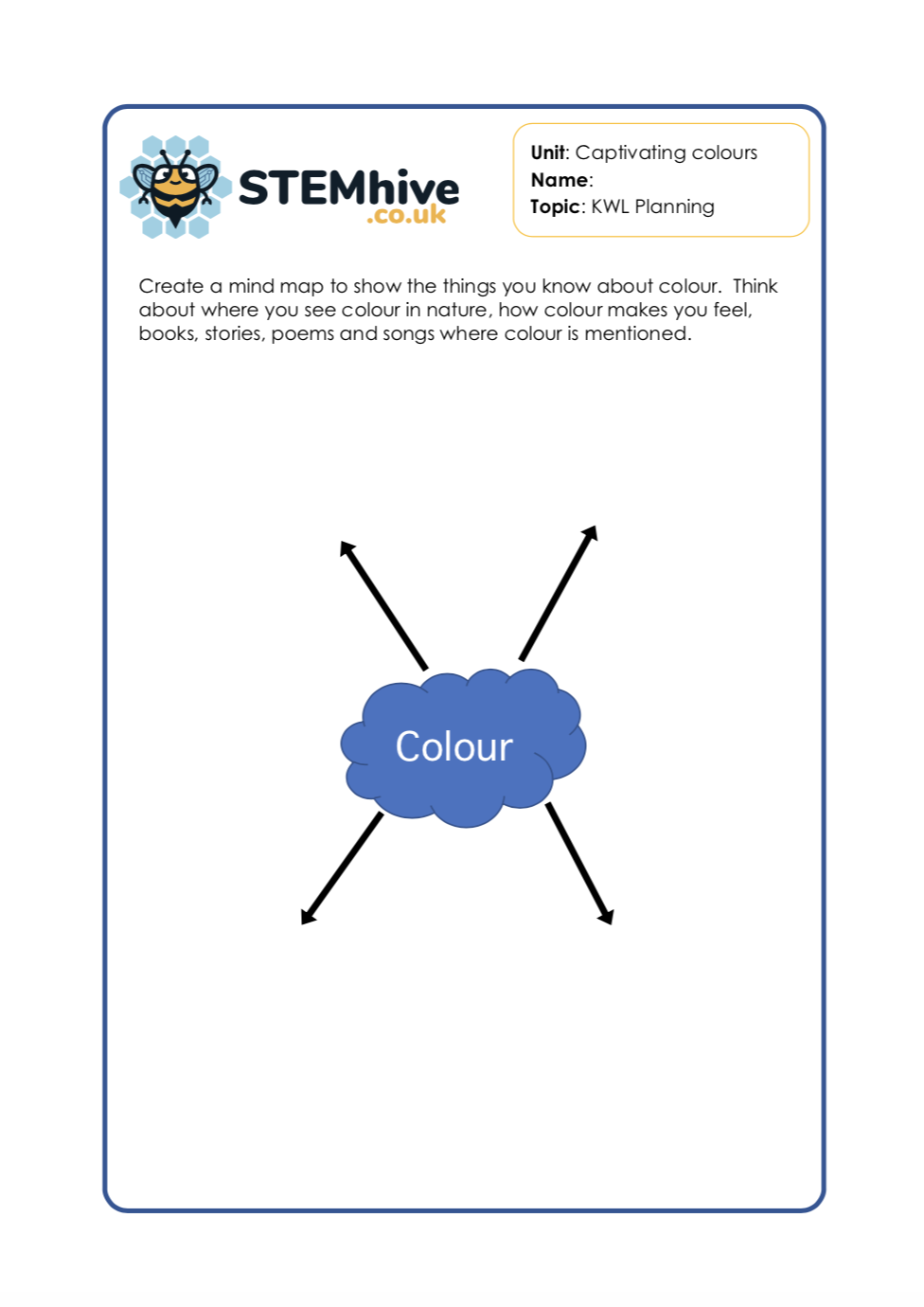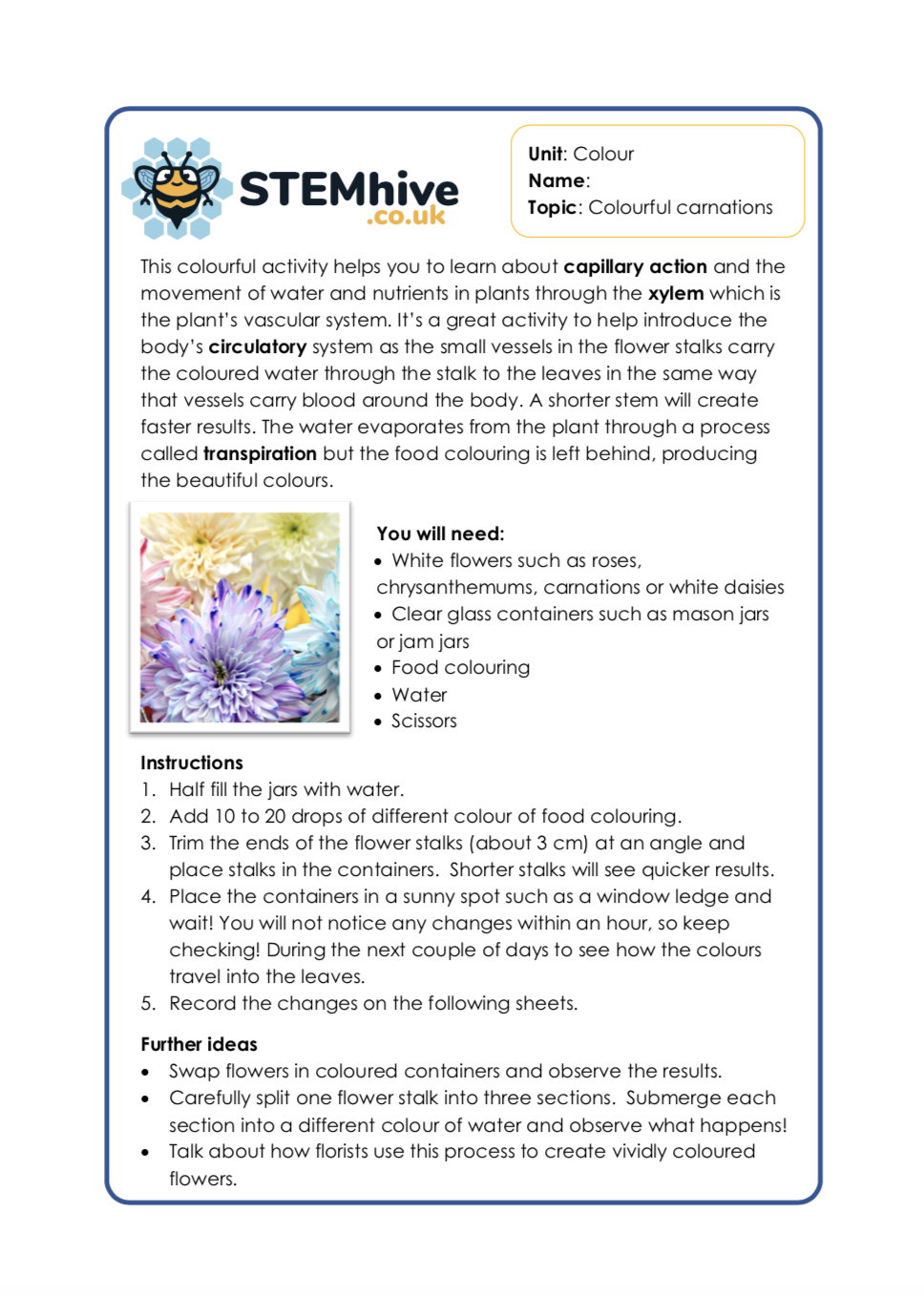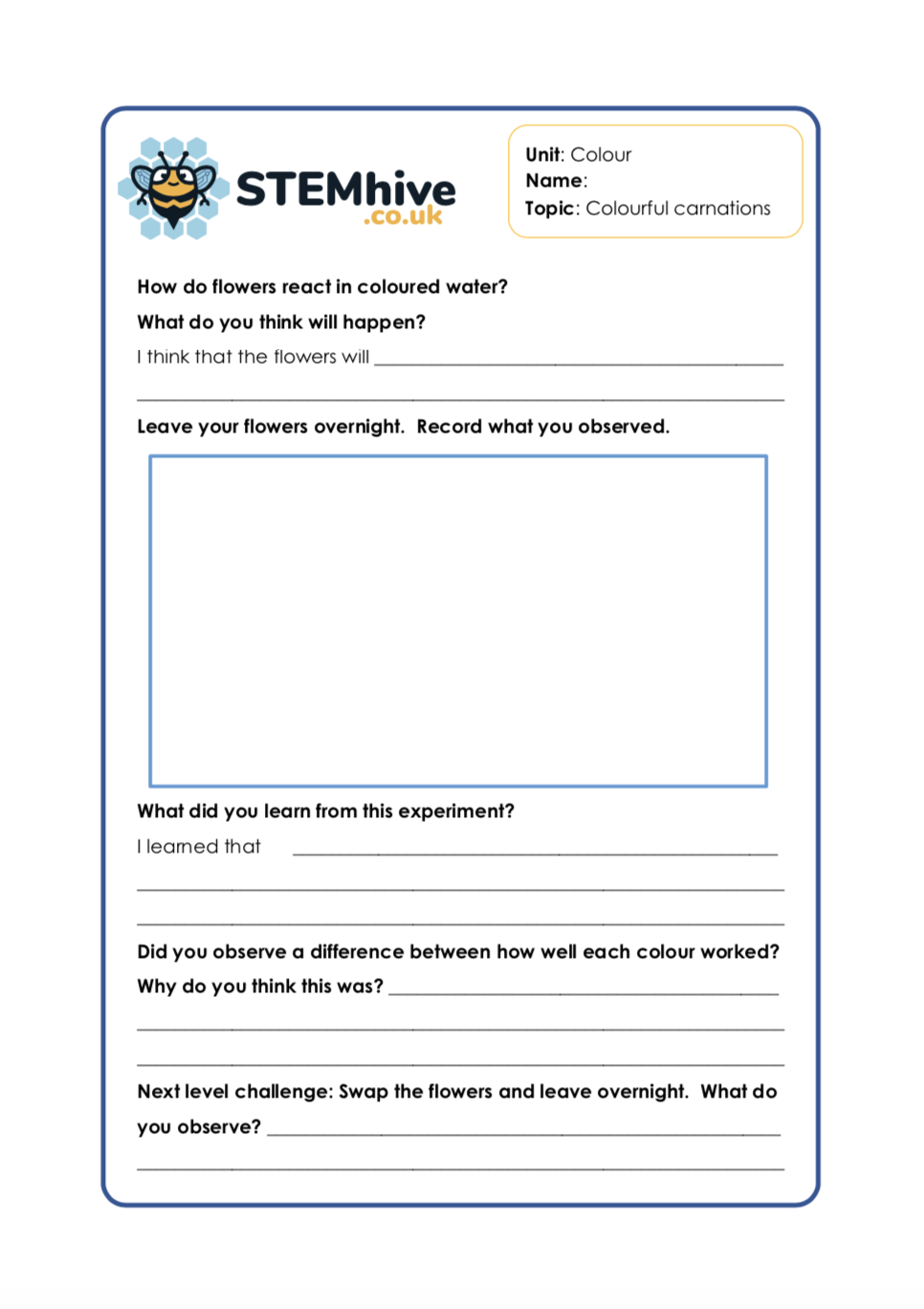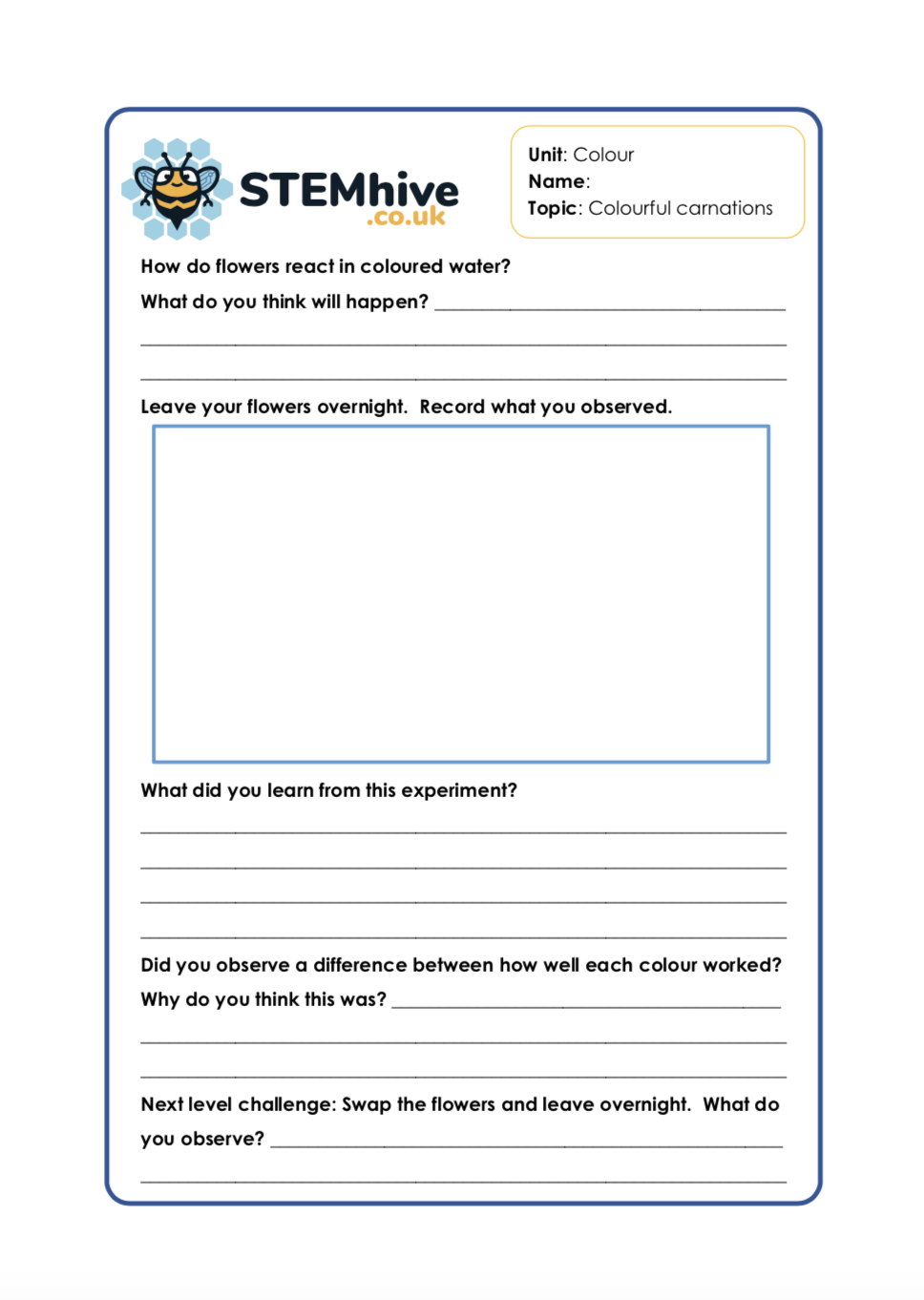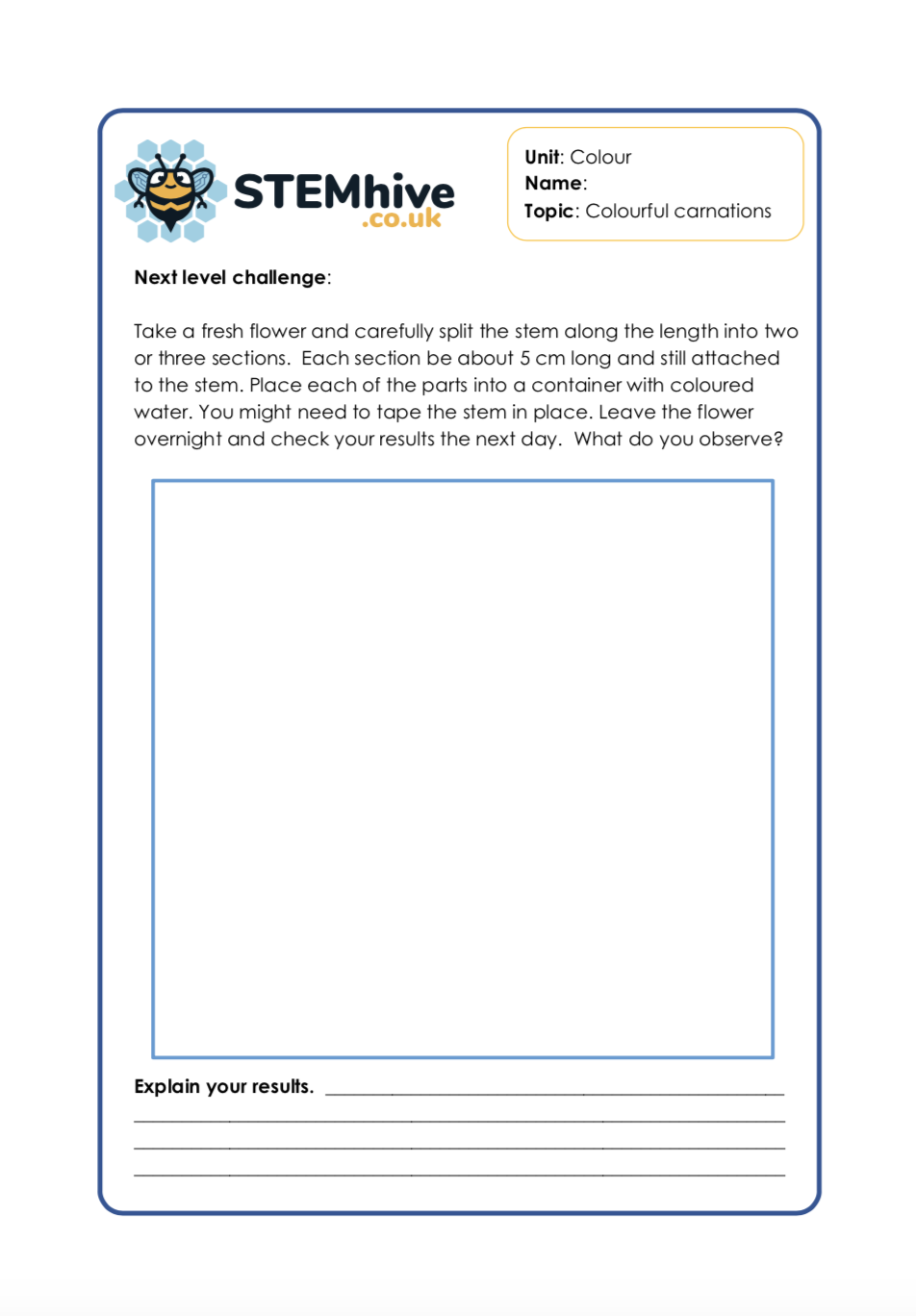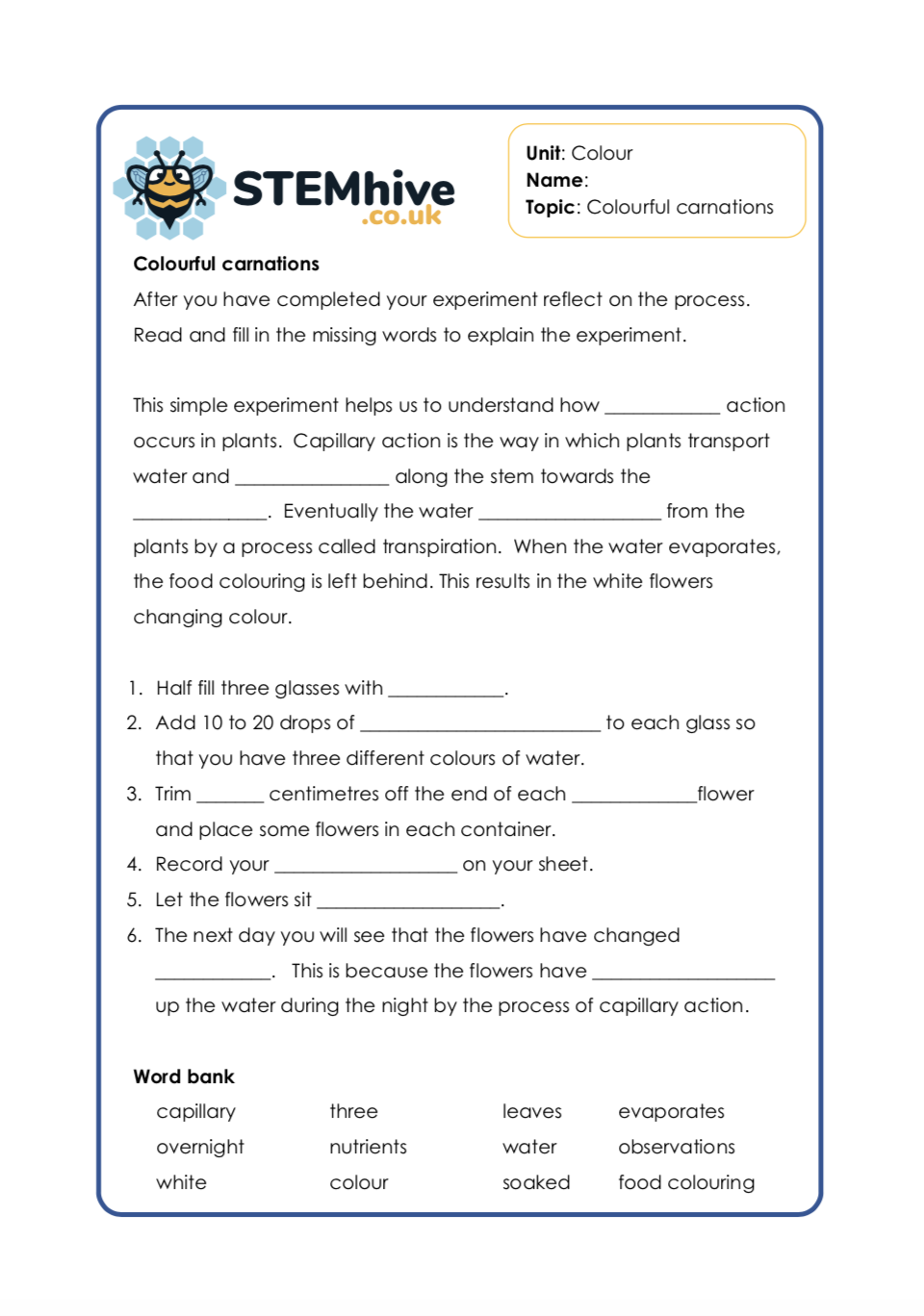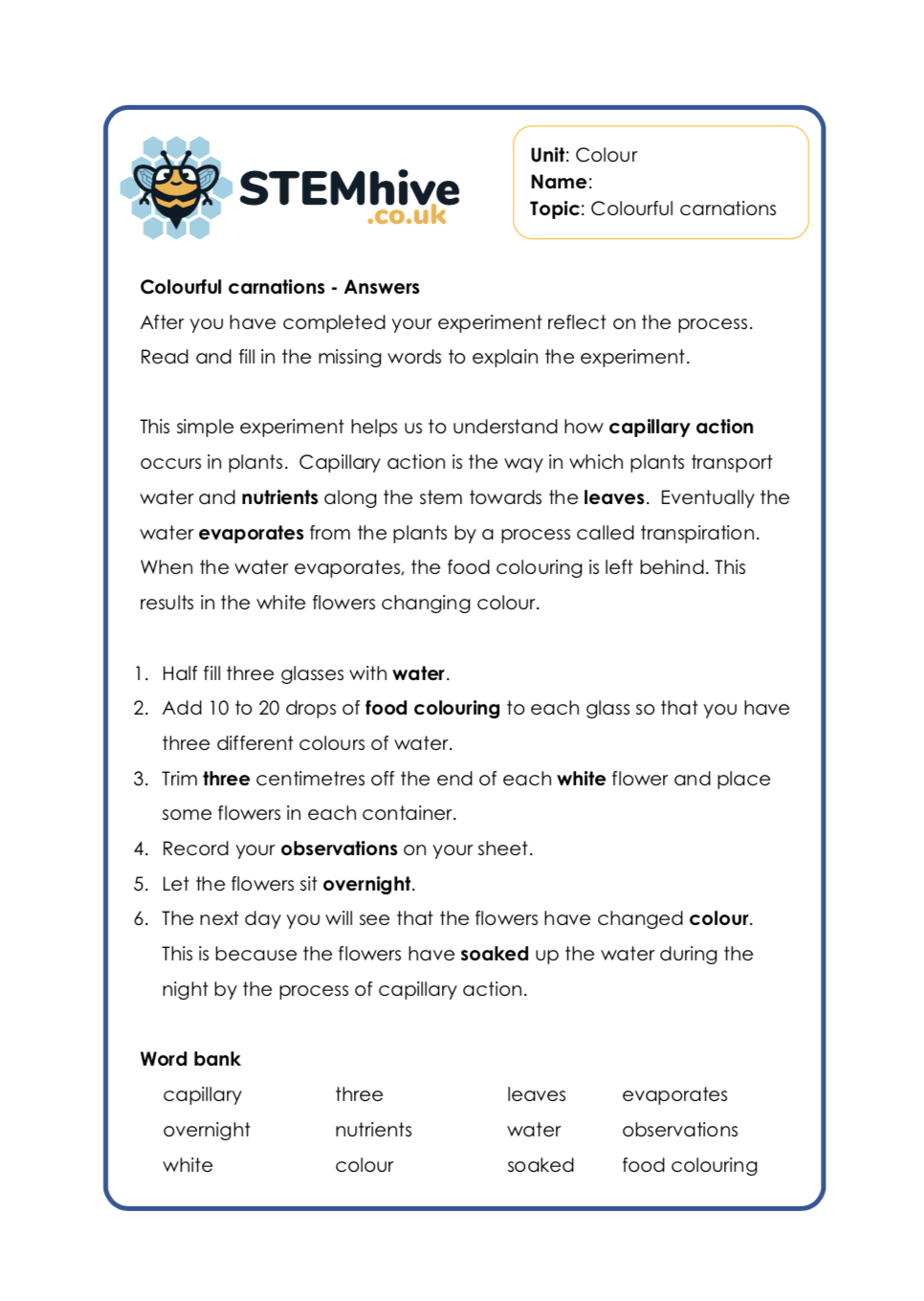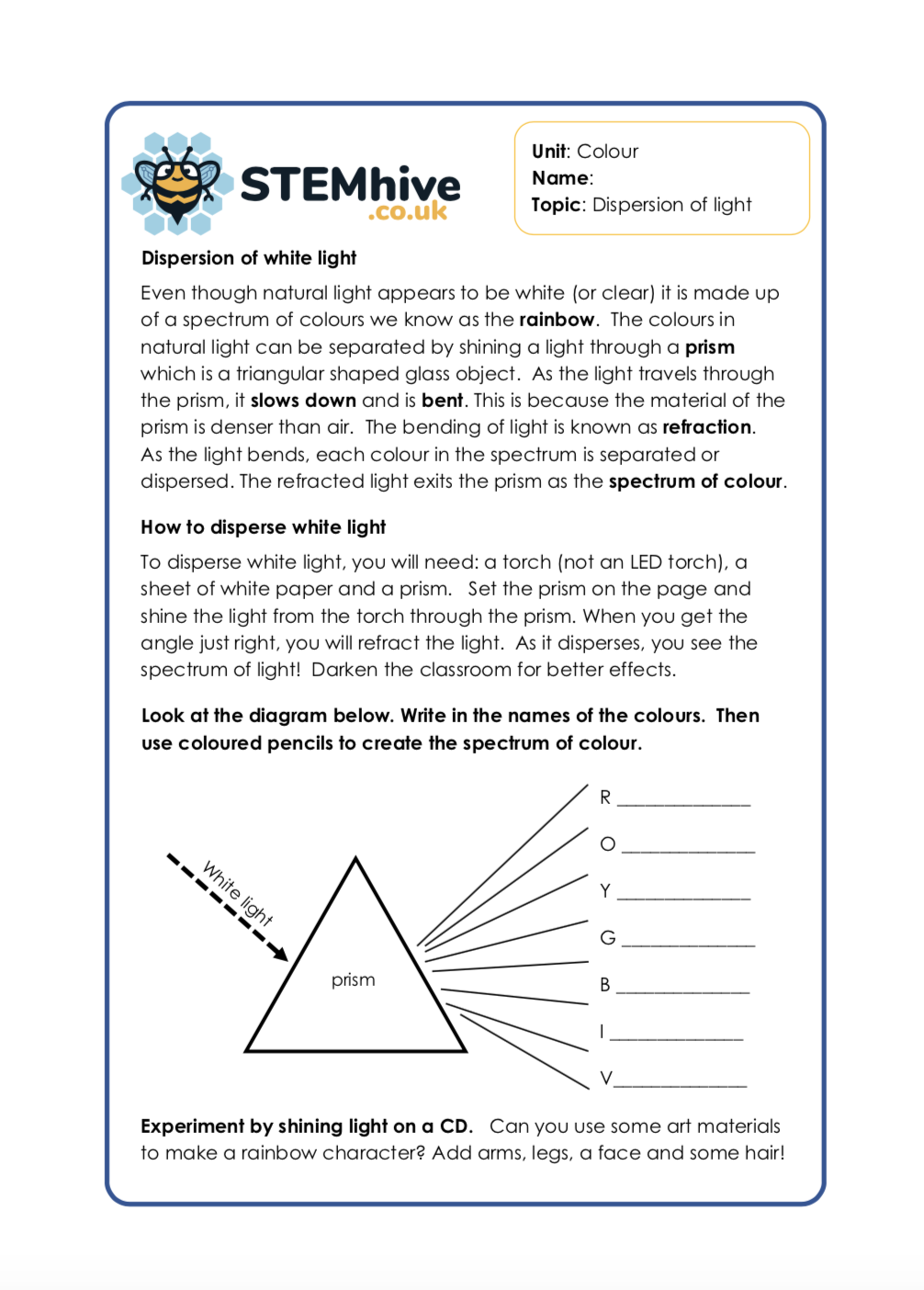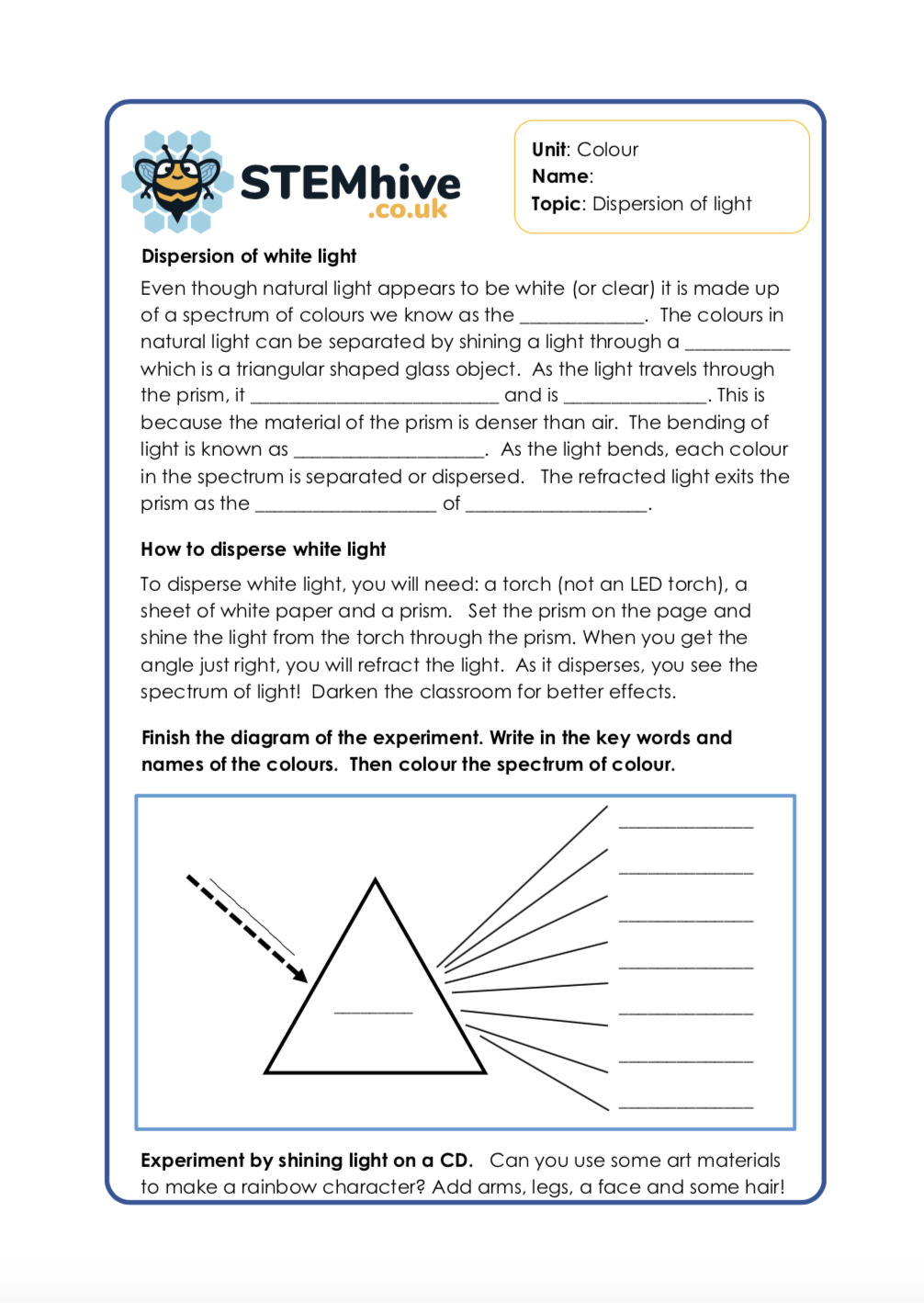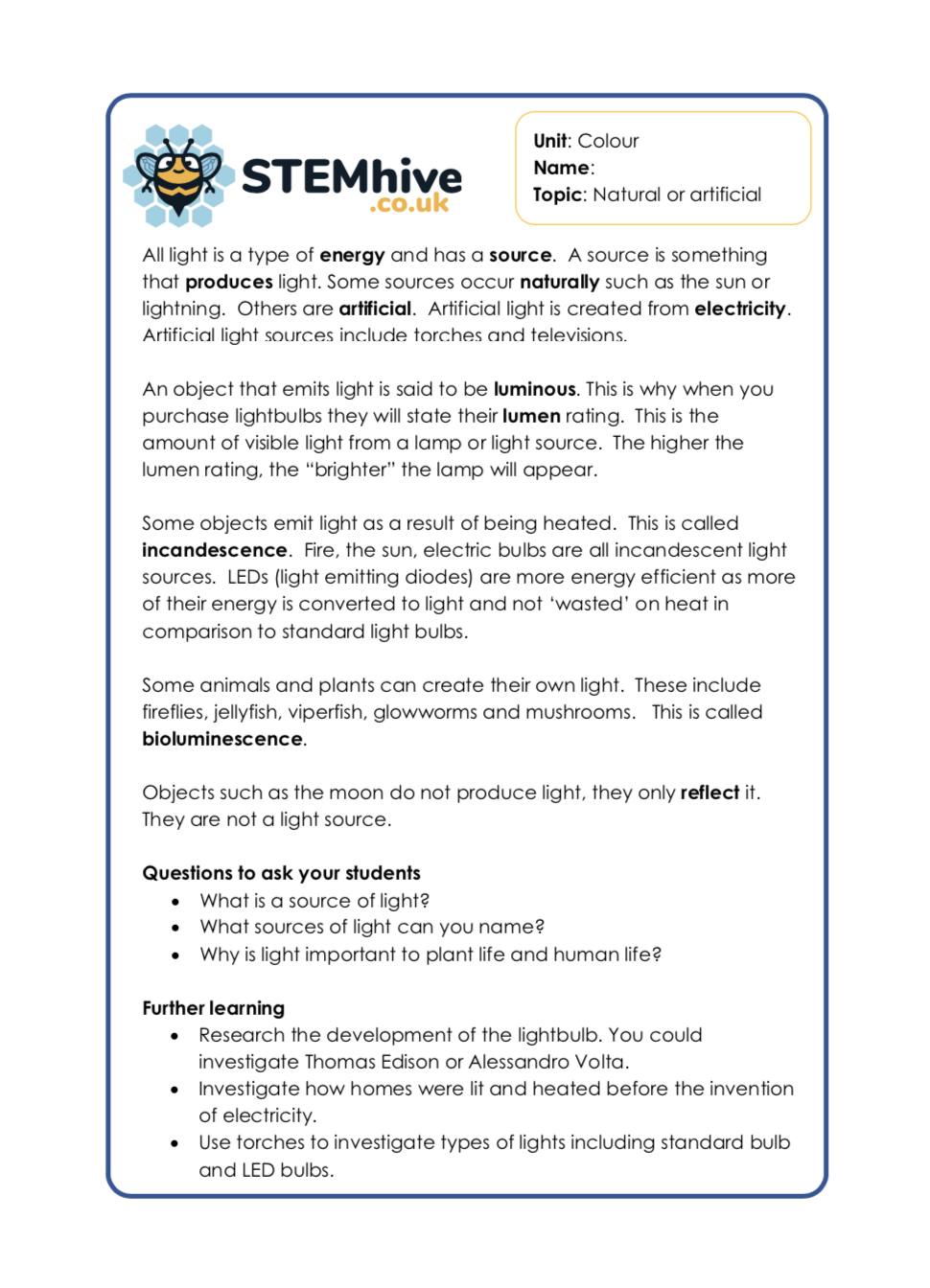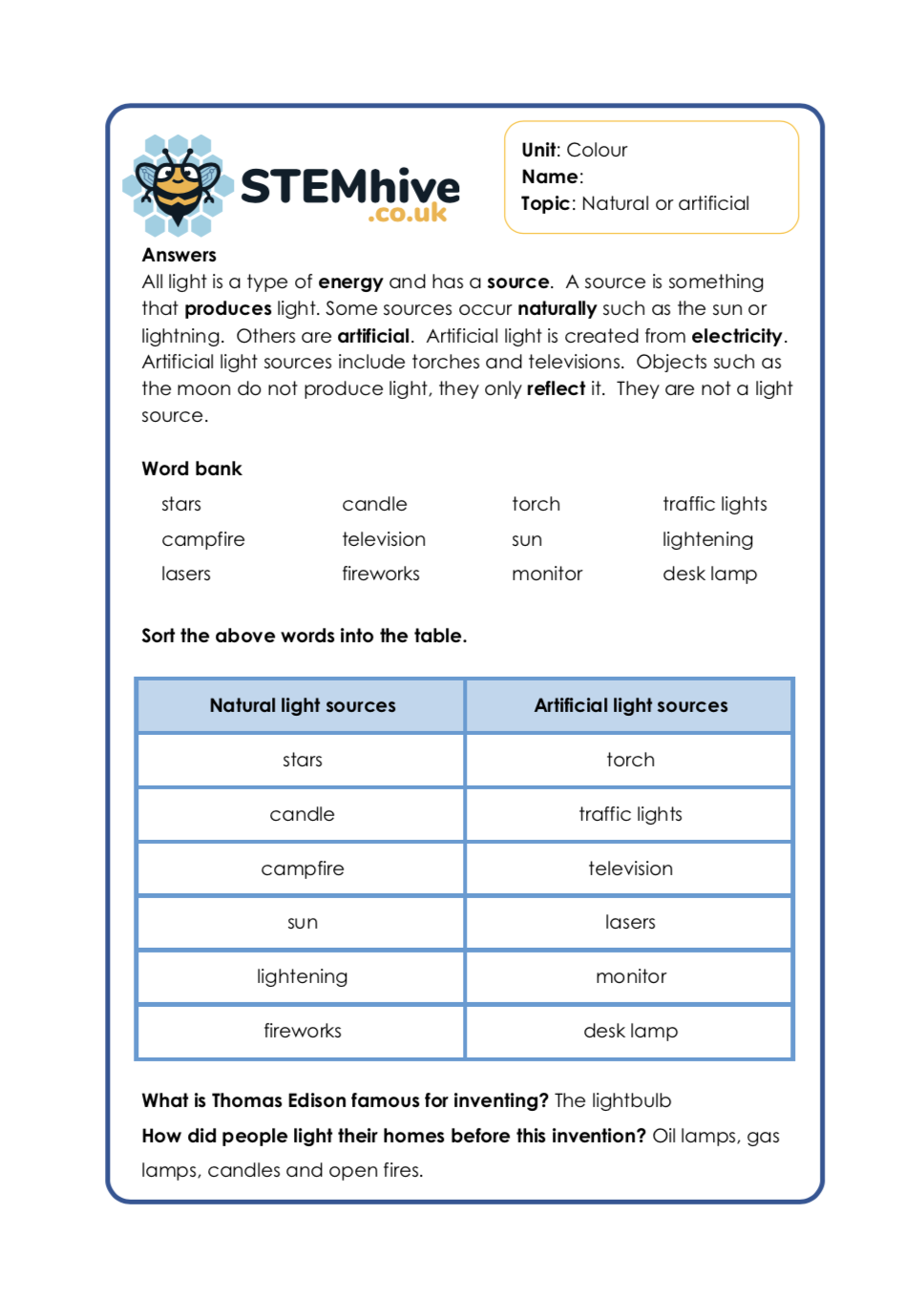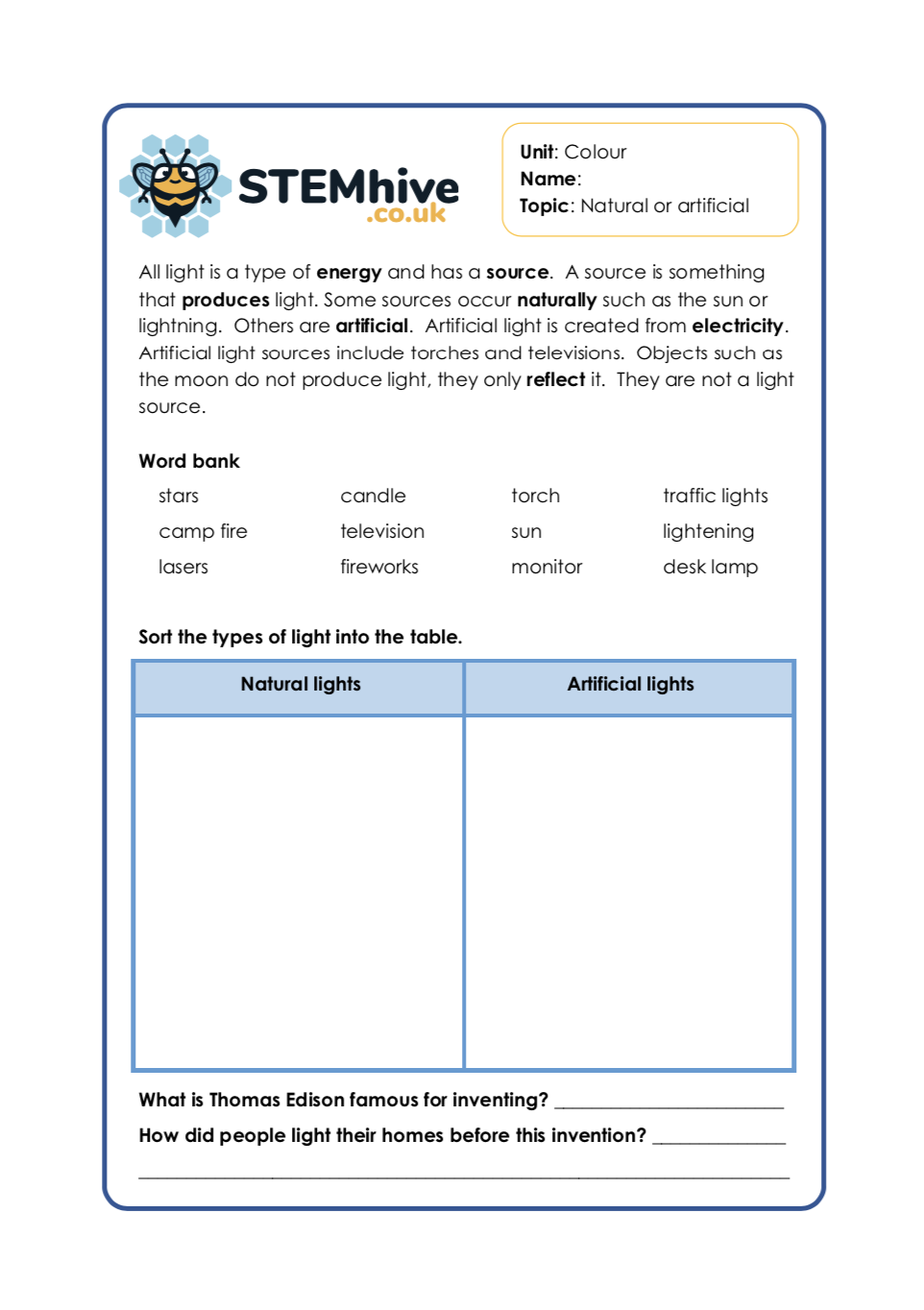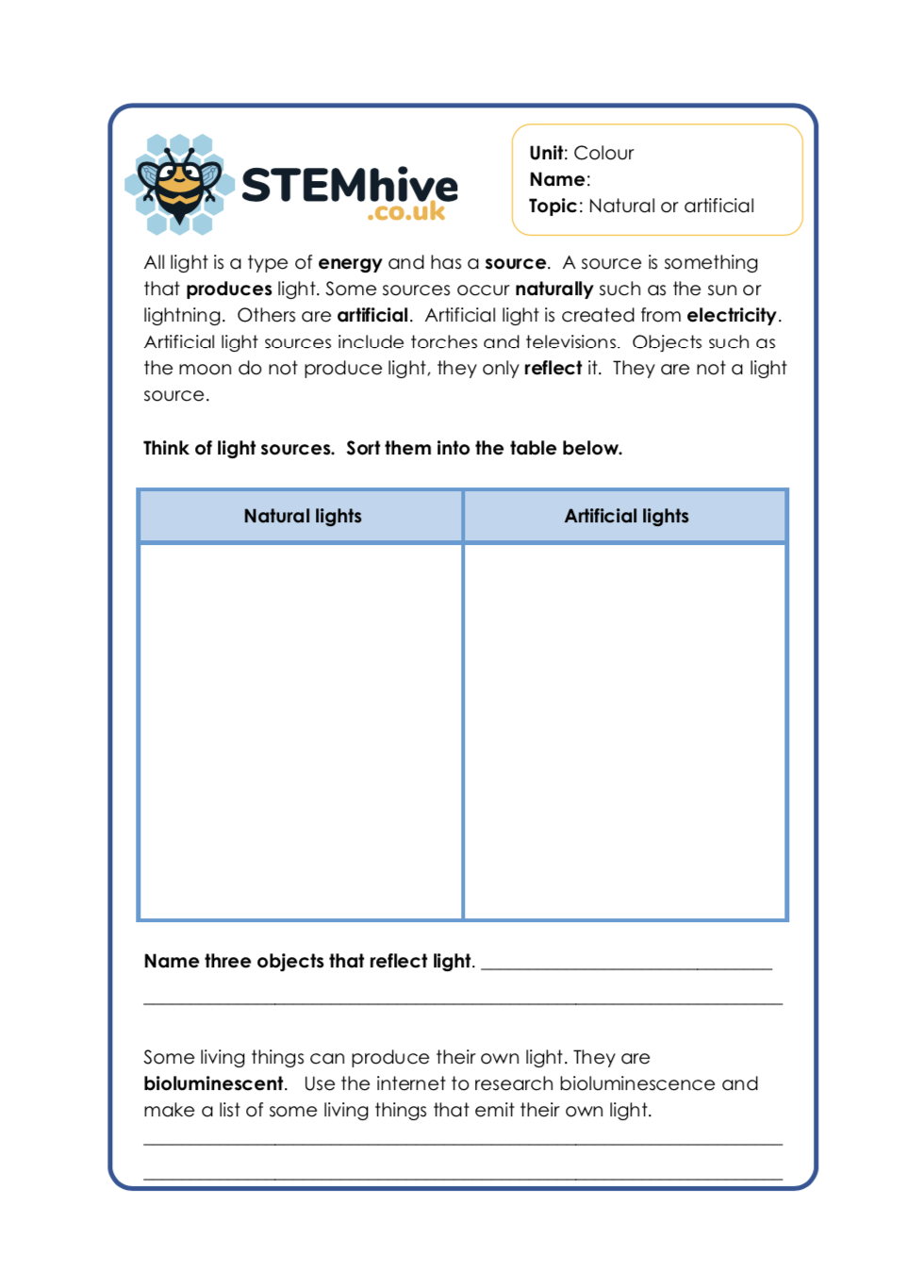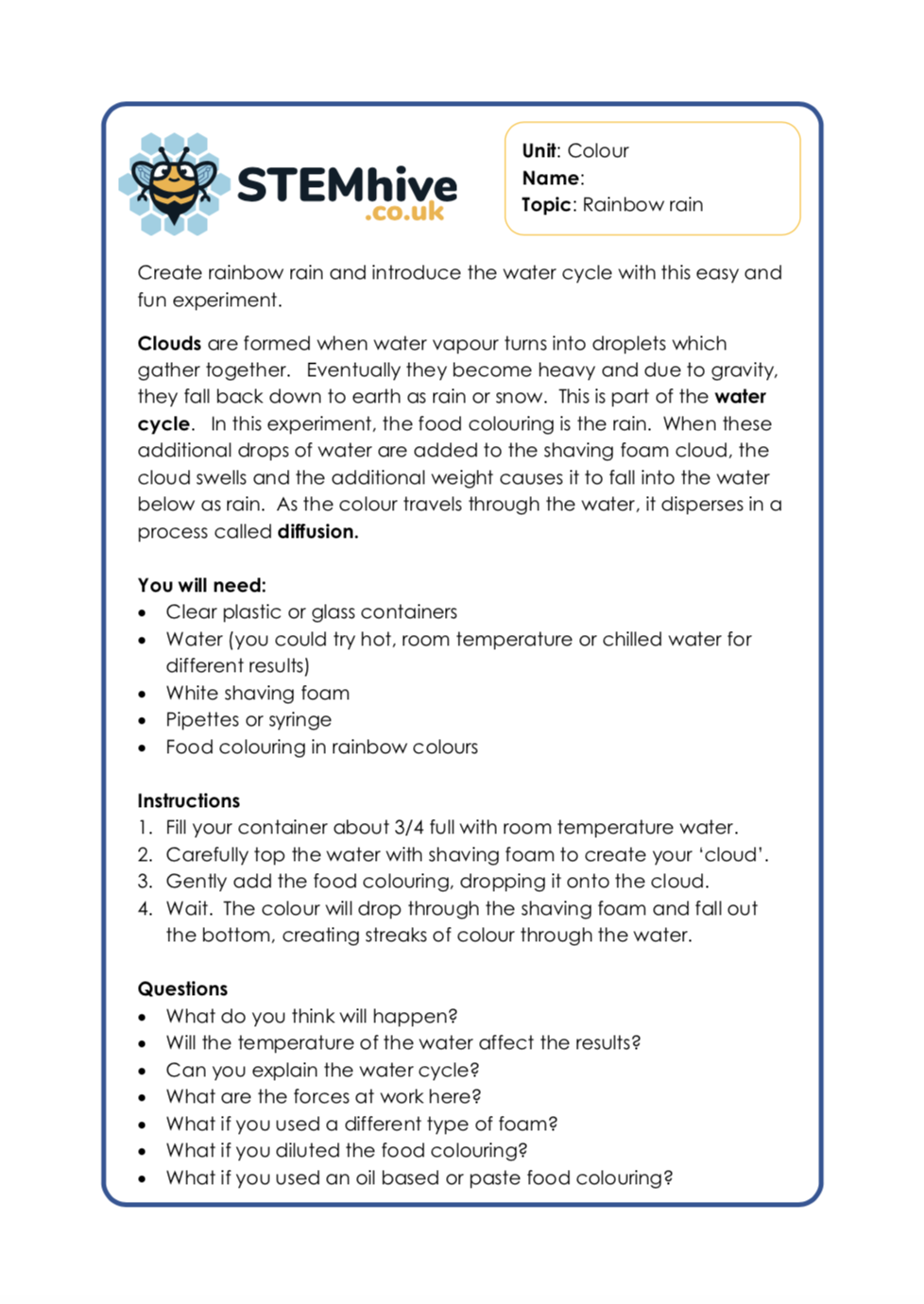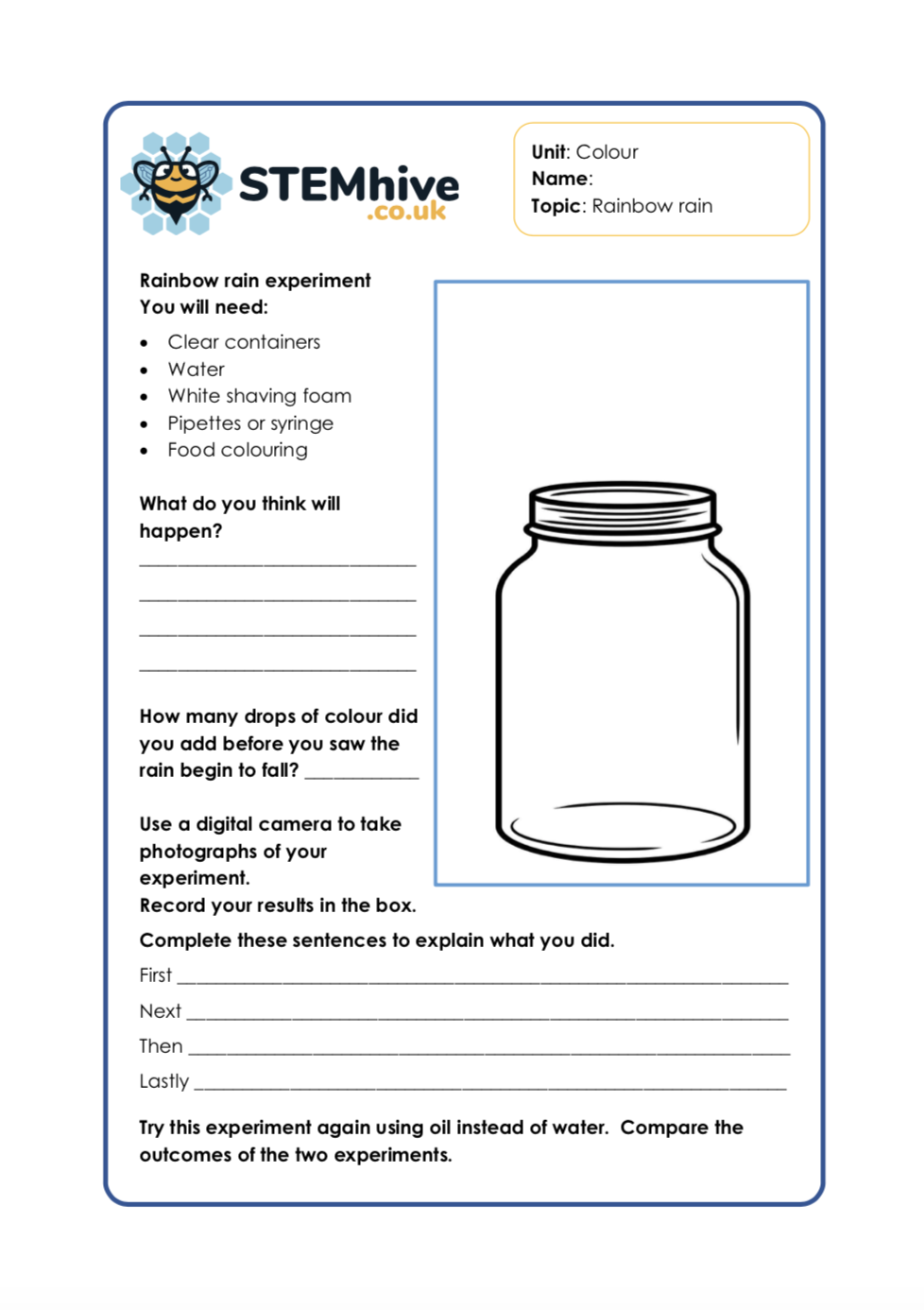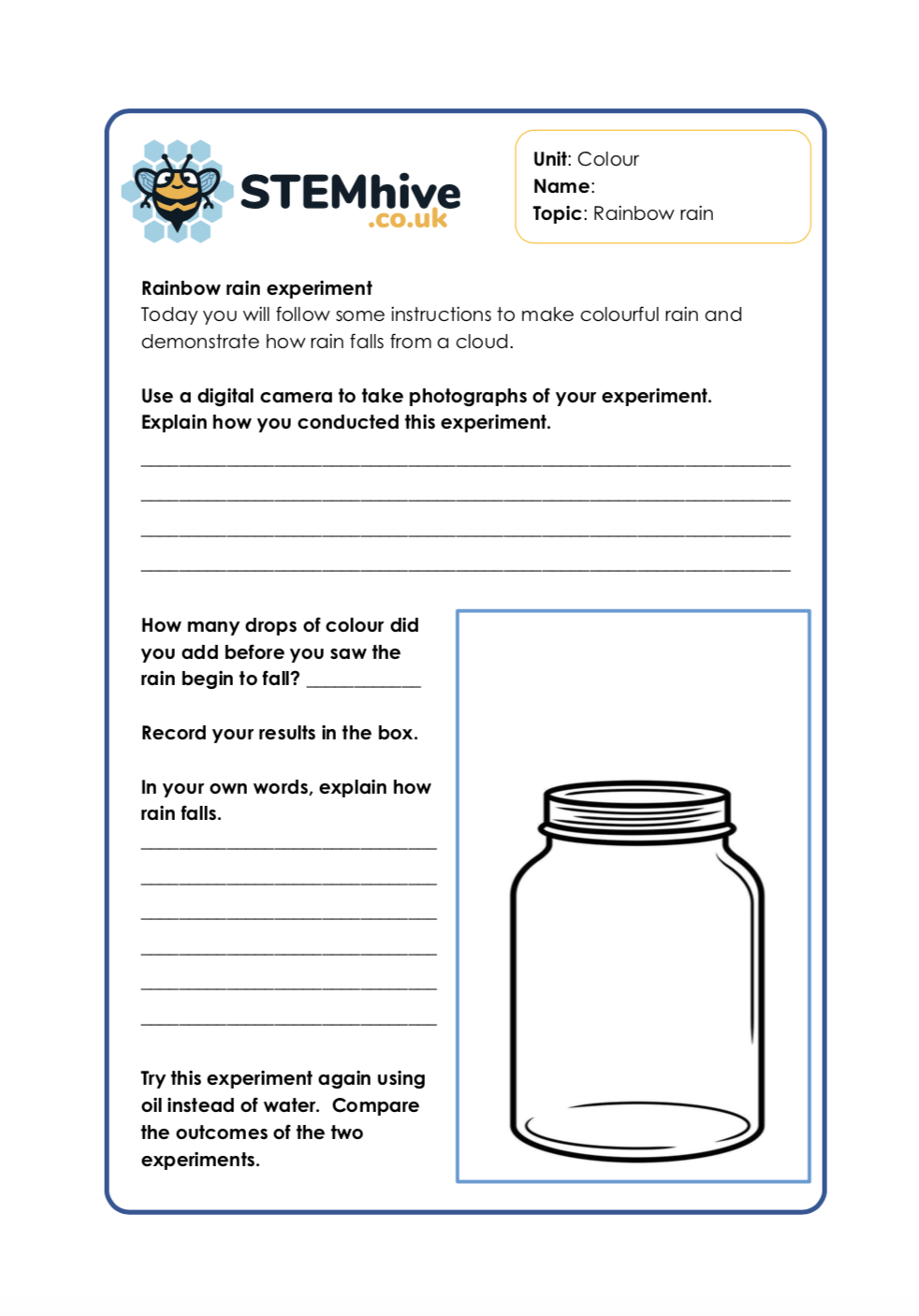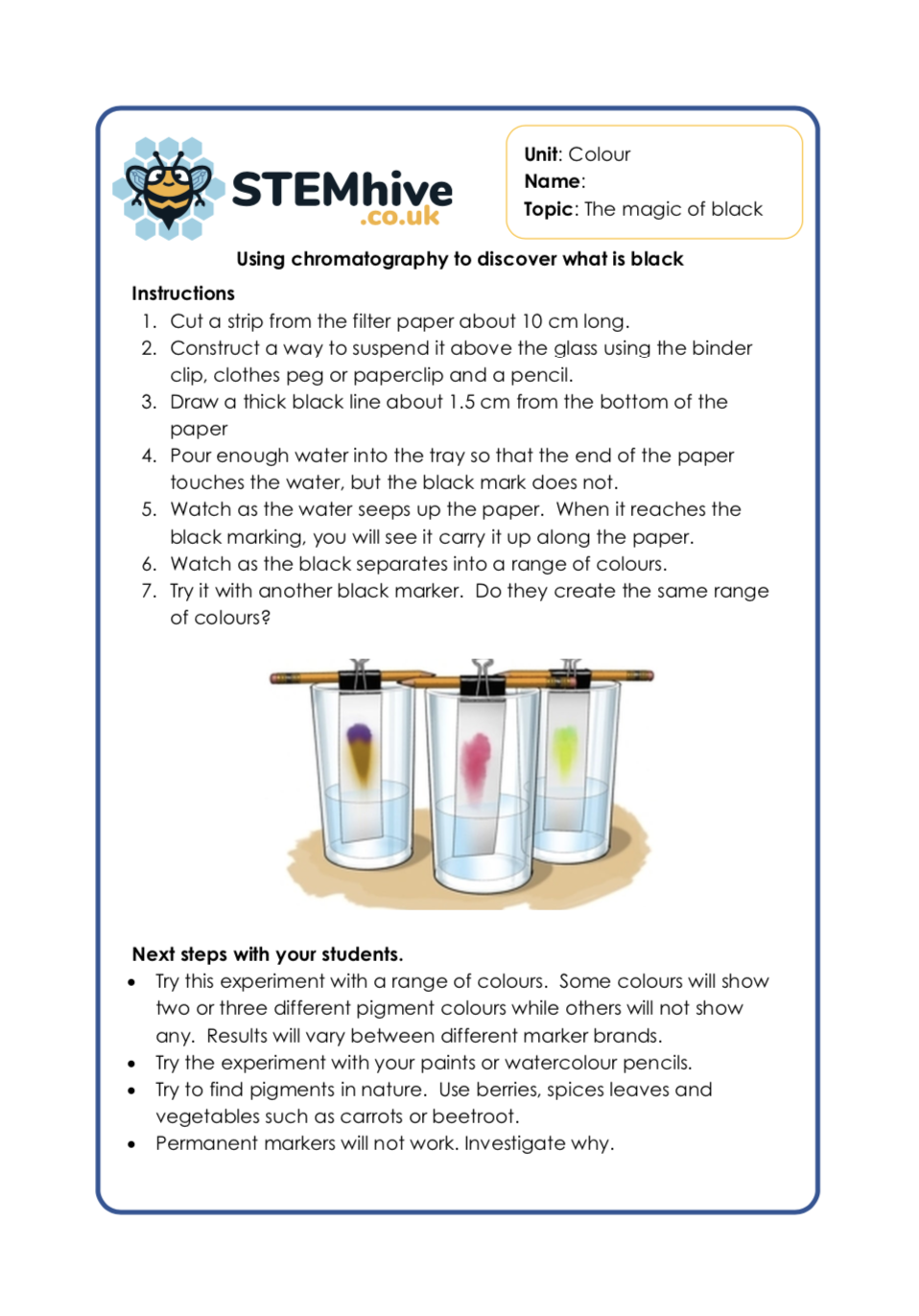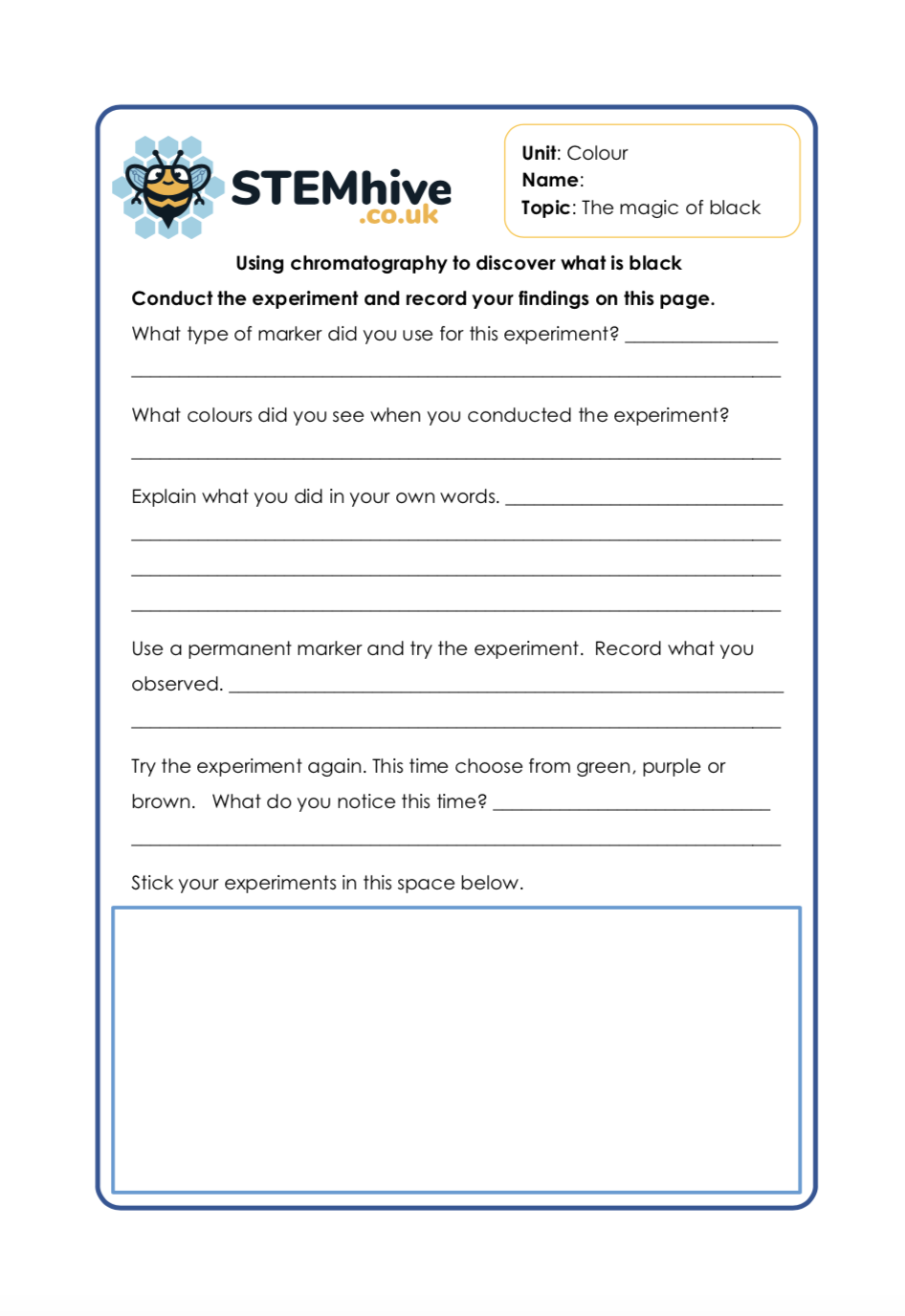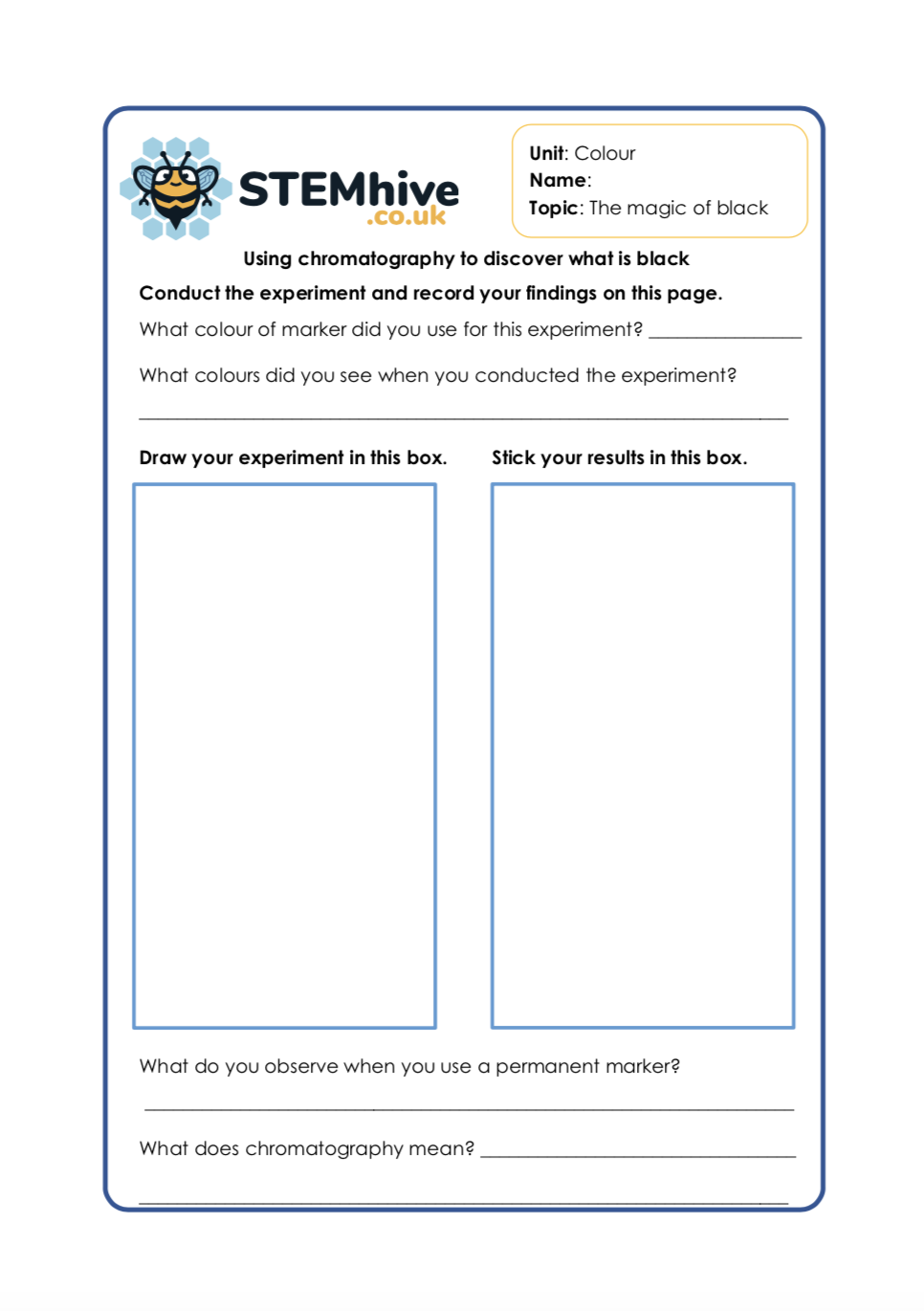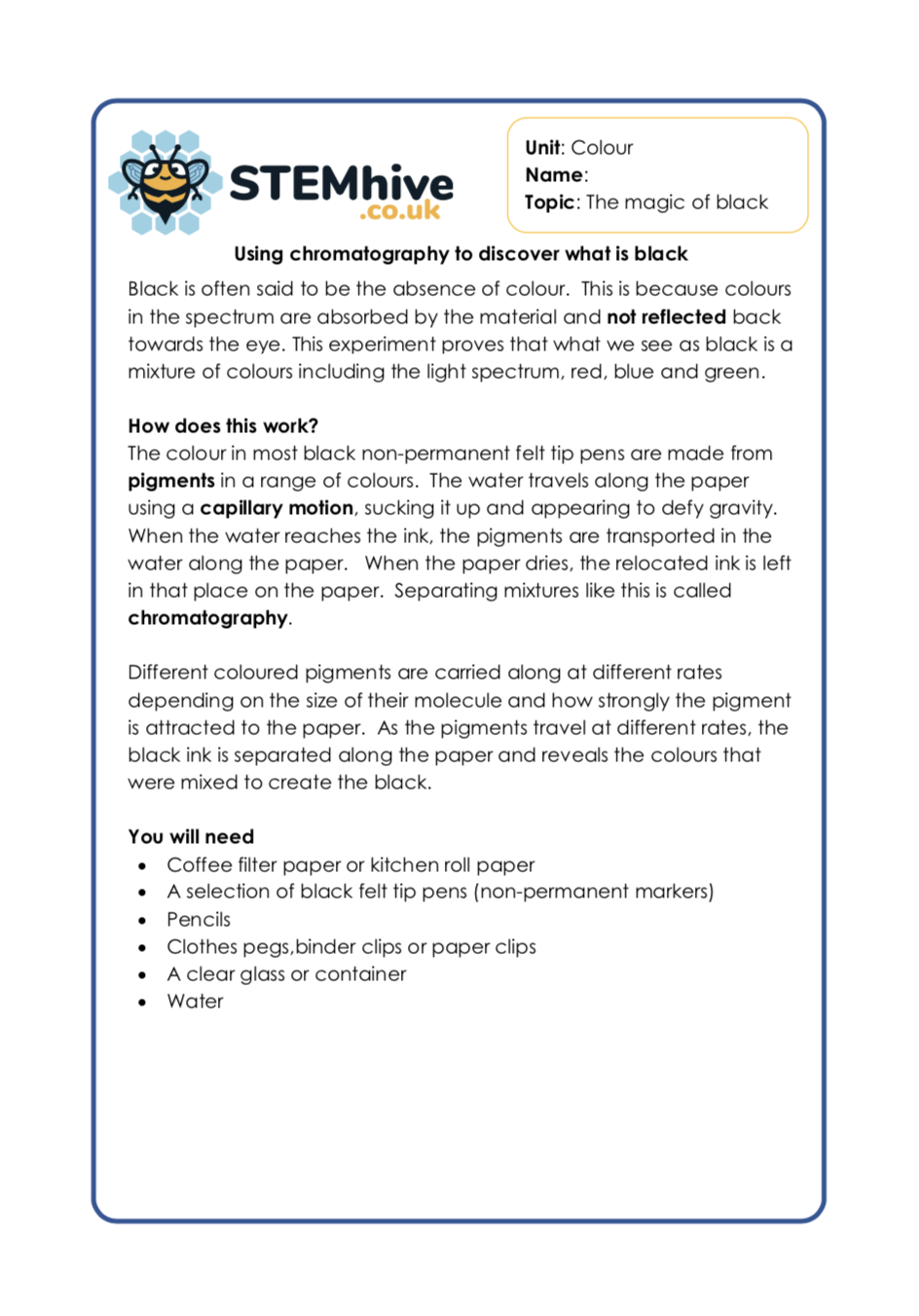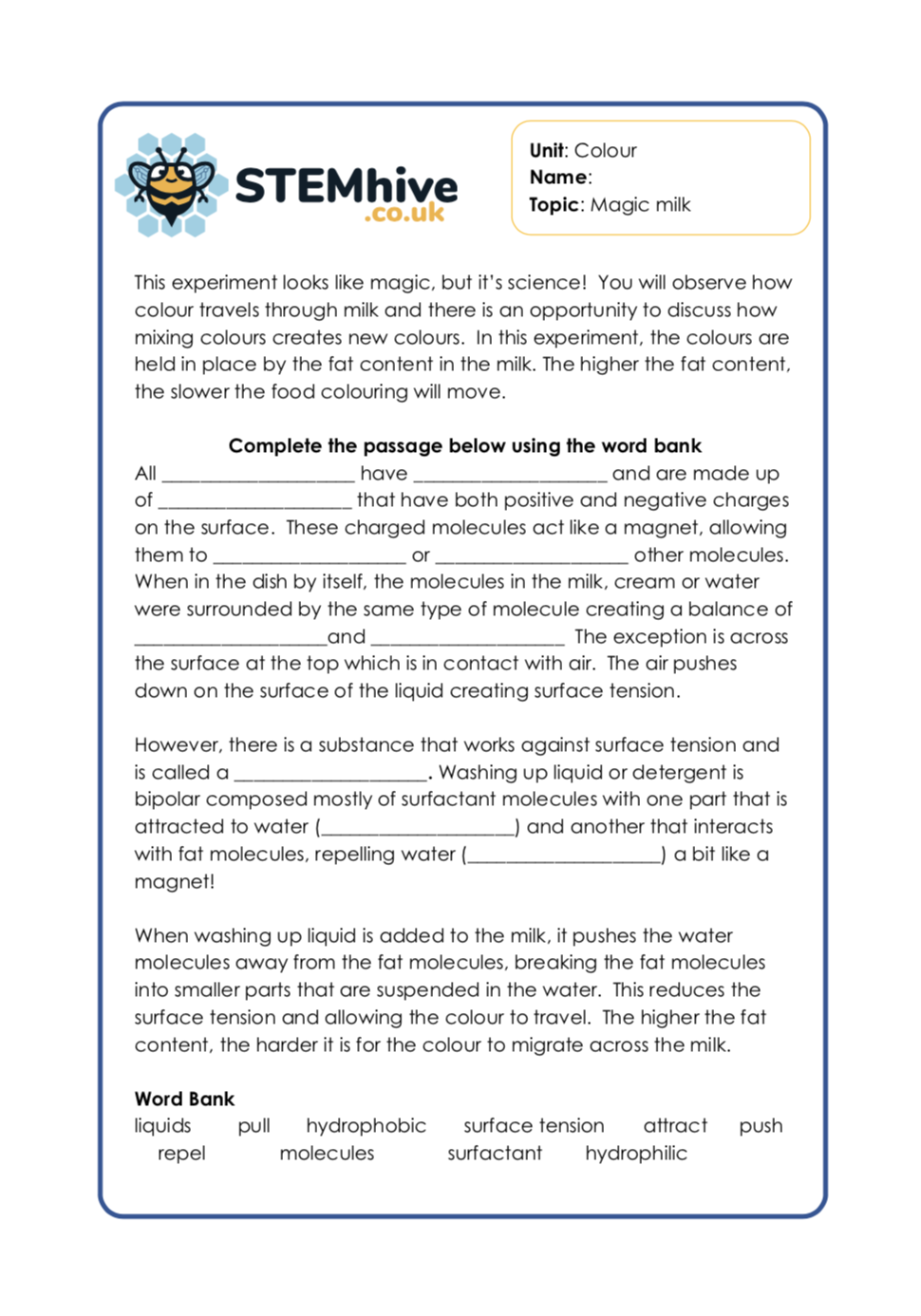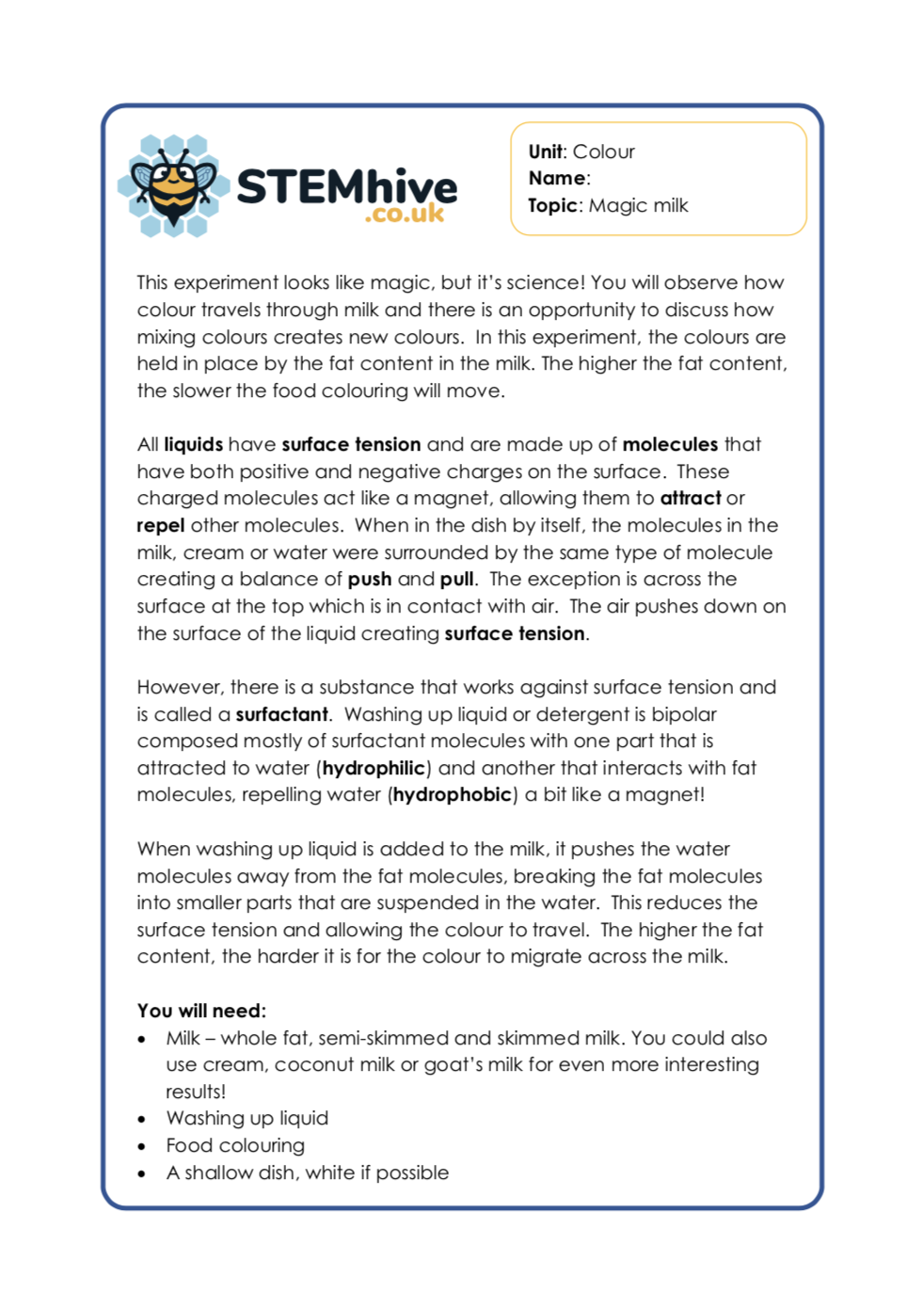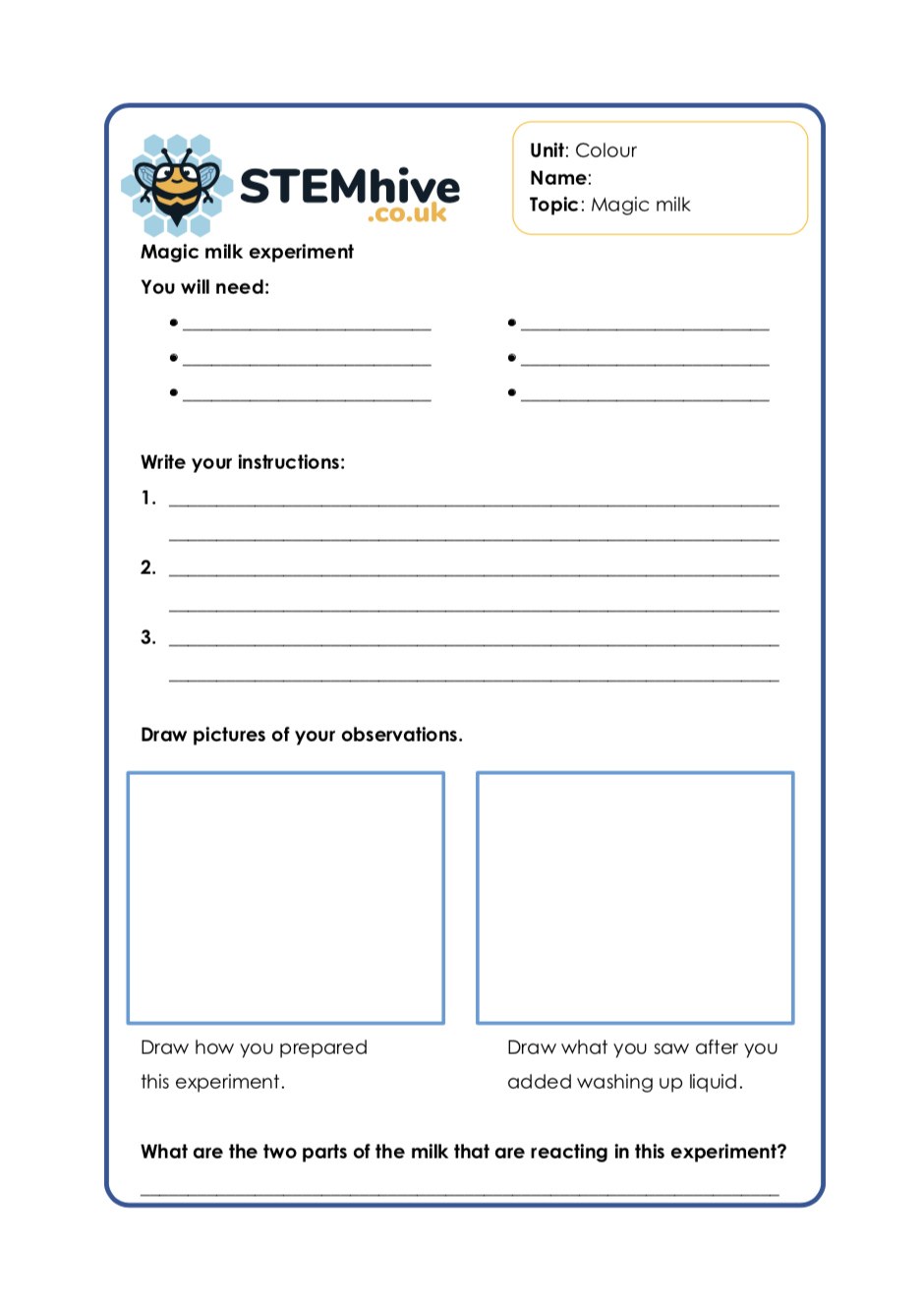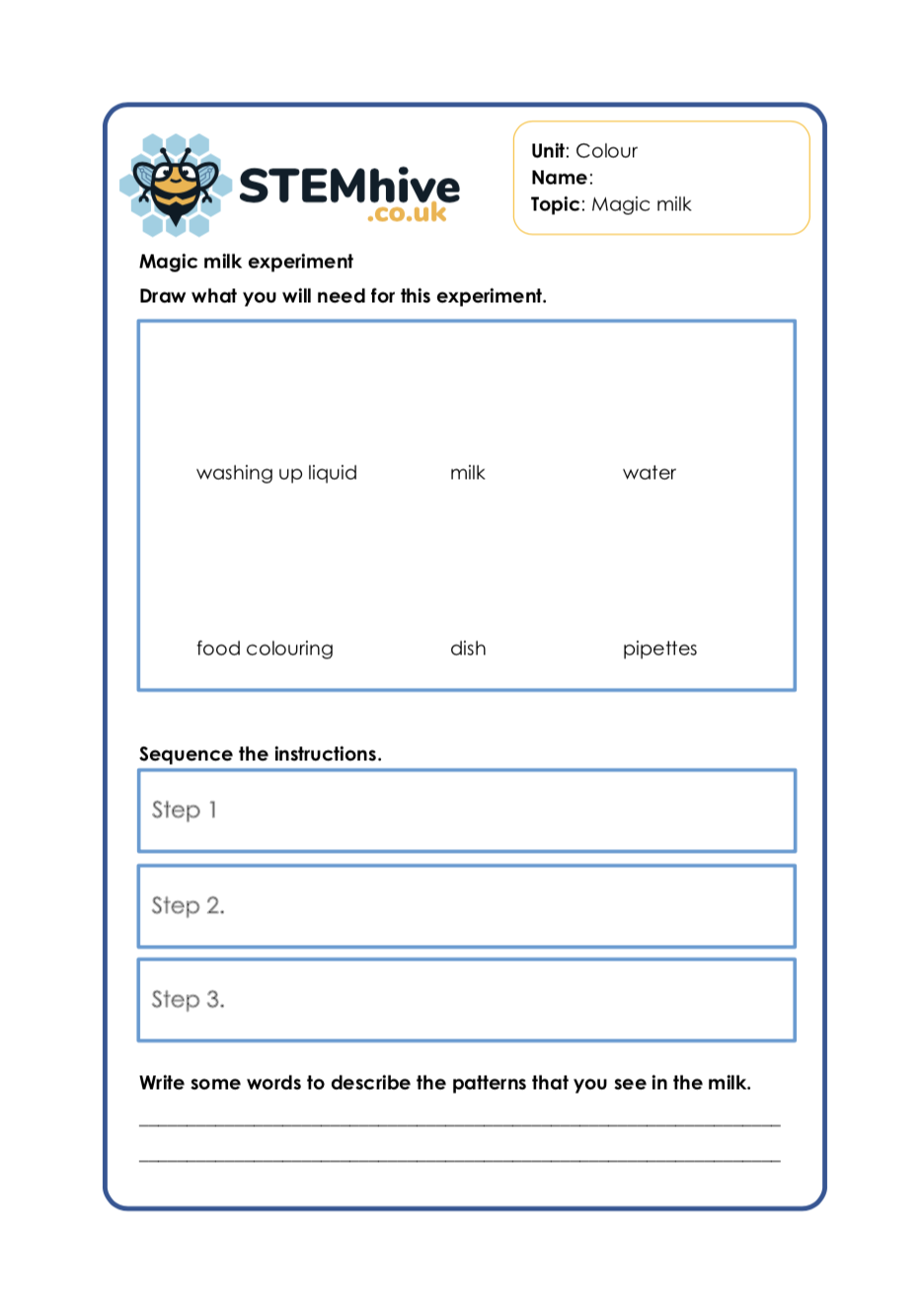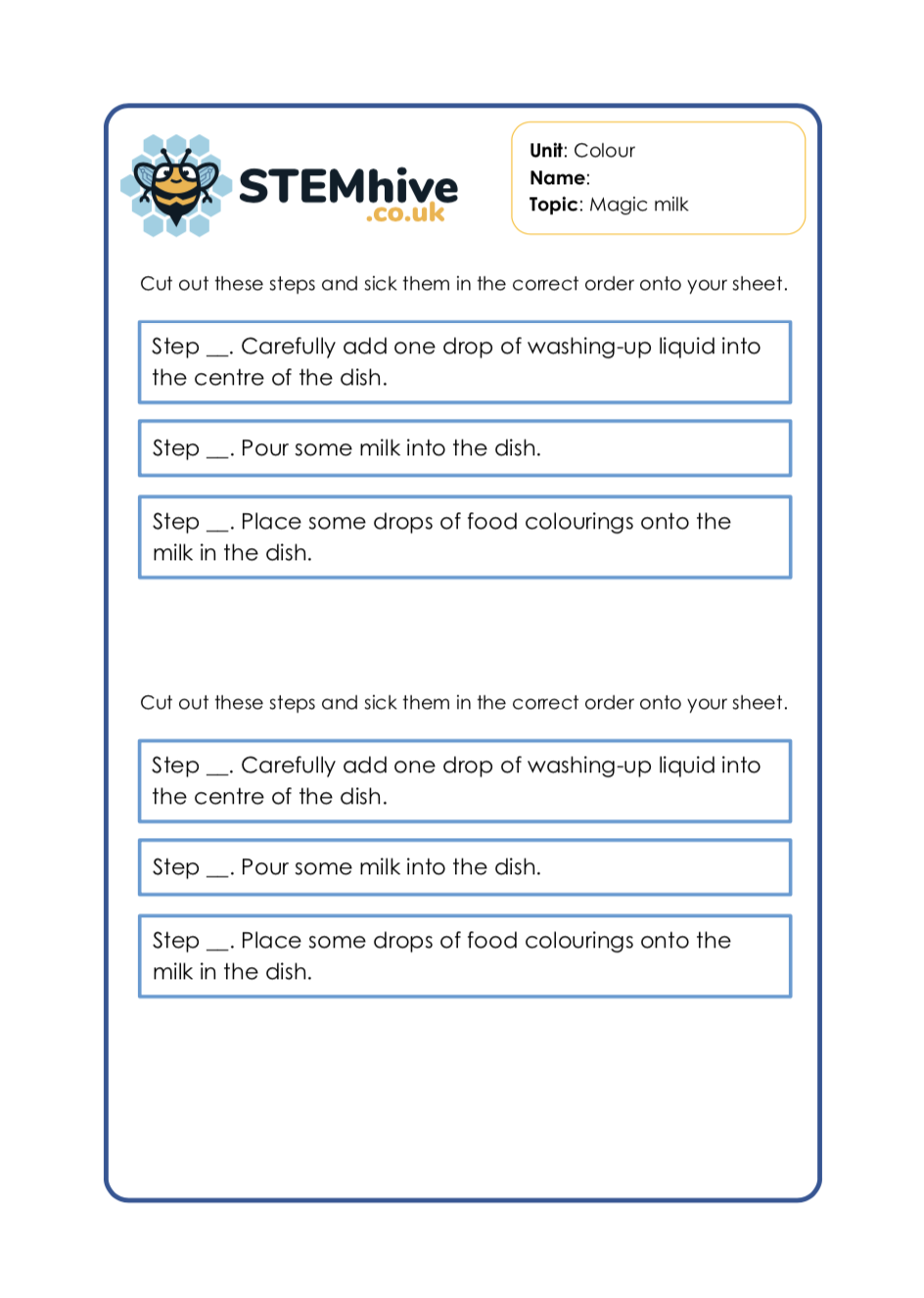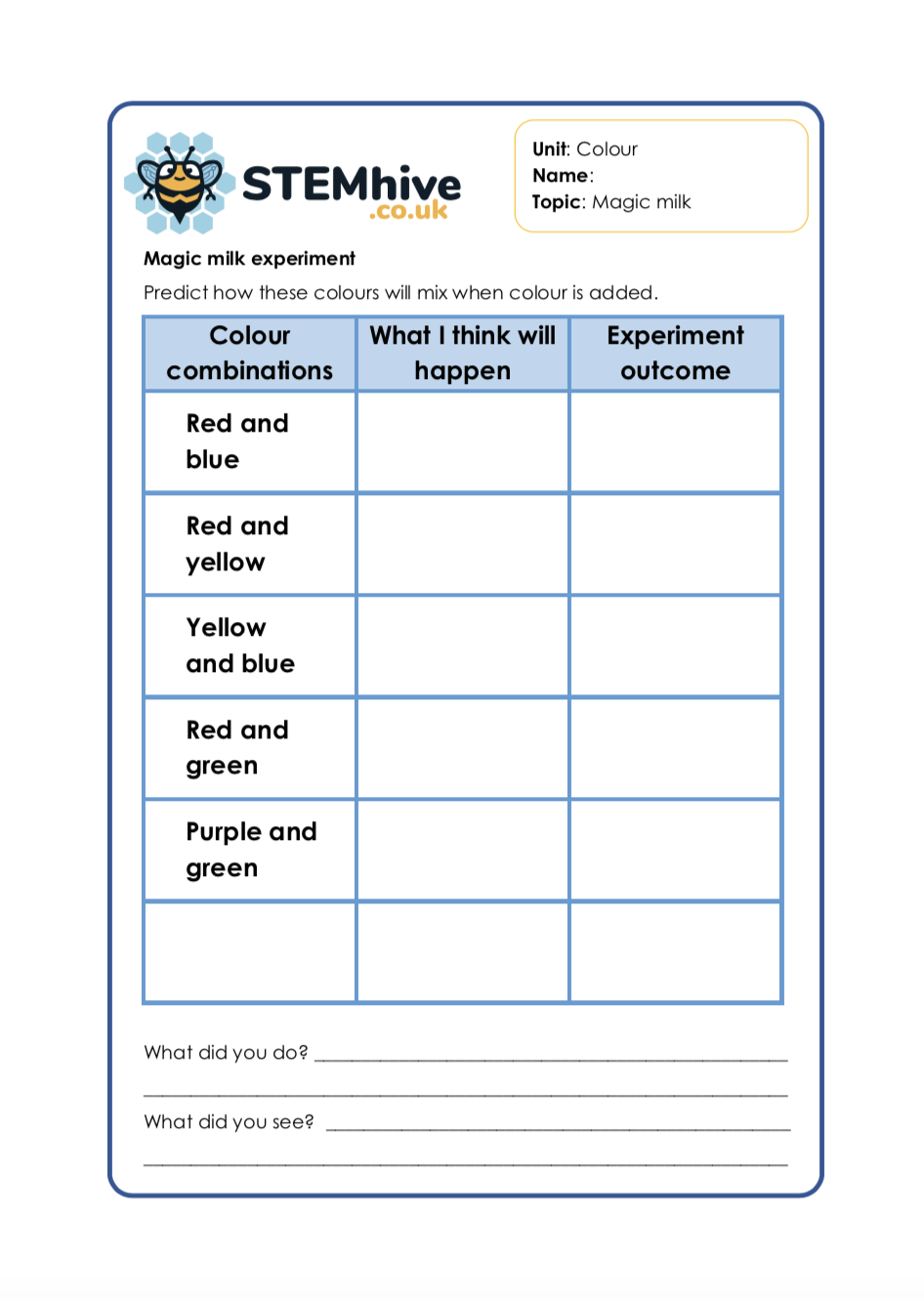Colour
Main Focus: KWL Grid
In this resource, your class will create a mind map to show the things you know about colour. Your class will think about where they see colour in nature, how colour makes them feel, books, stories, poems and songs where colour is mentioned.
Main Focus: Colourful Carnations Experiment
This colourful activity helps your class to learn about capillary action and the movement of water and nutrients in plants through the xylem in the plant’s vascular system.
It’s a great activity to help introduce the body’s circulatory system too as the small vessels in the flower stalks carry the coloured water through the stalk to the leaves in the same way that vessels carry blood around the body.
A shorter stem will create faster results. The water evaporates from the plant through a process called transpiration but the food colouring is left behind, producing the beautiful colours.
Main Focus: Colour Carnations - Explanation
After you have completed your experiment reflect on the process. Read and fill in the missing words to explain the experiment using the vocabulary in the word bank.
Main Focus: Dispersion of Light
This resource focuses on the dispersion of white light and is aimed at UKS2 classes or children aged 9-11.
Your Year 5 and Year 6 class will read the science behind how white light is dispersed and how they can complete an experiment to see it happen.
Even though natural light appears to be white (or clear) it is made up of a spectrum of colours we know as the rainbow. The colours in natural light can be separated by shining a light through a prism which is a triangular shaped glass object. As the light travels through the prism, it slows down and is bent. This is because the material of the prism is denser than air. The bending of light is known as refraction.
As the light bends, each colour in the spectrum is separated or dispersed. The refracted light exits the prism as the spectrum of colour.
Unlock ResourceMain Focus: Natural or Artificial Light?
All light is a type of energy and has a source. A source is something that produces light. Some sources occur naturally such as the sun or lightning. Others are artificial. Artificial light is created from electricity. Artificial light sources include torches and televisions.
In this resource, your class will explore naturally occurring and artificial light and explore key concepts such as: energy, incandescence and bioluminescence.
Main Focus: Rainbow Rain Experiment
Clouds are formed when water vapour turns into droplets which gather together. Eventually they become heavy and due to gravity, they fall back down to earth as rain or snow. This is part of the water cycle.
In this experiment, the food colouring is the rain. When these additional drops of water are added to the shaving foam cloud, the cloud swells and the additional weight causes it to fall into the water below as rain. As the colour travels through the water, it disperses in a process called diffusion.
Unlock ResourceMain Focus: The Magic of Black
Black is often said to be the absence of colour. This is because colours in the spectrum are absorbed by the material and not reflected back towards the eye. This experiment proves that what we see as black is a mixture of colours including the light spectrum, red, blue and green.
For this KS2 STEM experiment, your class will need:
- Coffee filter paper or kitchen roll paper
- A selection of black felt tip pens (non-permanent markers)
- Pencils
- Clothes pegs,binder clips or paper clips
- A clear glass or container
- Water
Main Focus: Magic Milk Experiment
This resource explores vocabulary linked to the magic milk experiment. It also guides your class to complete the experiment using out templates and resources.
When washing up liquid is added to the milk, it pushes the water molecules away from the fat molecules, breaking the fat molecules into smaller parts that are suspended in the water. This reduces the surface tension and allowing the colour to travel. The higher the fat content, the harder it is for the colour to migrate across the milk.
Unlock Resource
